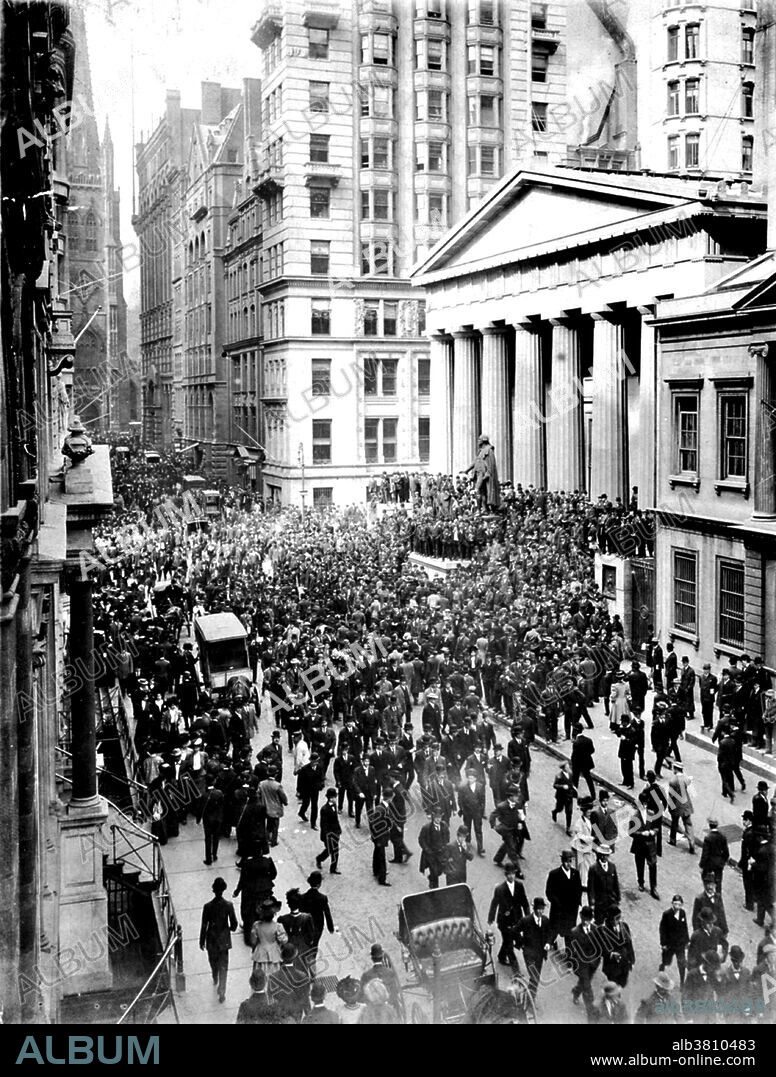alb3810483
NYC, Knickerbocker Crisis, Panic of 1907

|
Añadir a otro lightbox |
|
Añadir a otro lightbox |



¿Ya tienes cuenta? Iniciar sesión
¿No tienes cuenta? Regístrate
Compra esta imagen

Título:
NYC, Knickerbocker Crisis, Panic of 1907
Descripción:
Ver traducción automática
The Panic of 1907 was a financial crisis that occurred when the New York Stock Exchange fell almost 50% from its peak the previous year. It occurred during a time of economic recession, and there were numerous runs on banks and trust companies. The panic was triggered by the failed attempt in October 1907 to corner the market on stock of the United Copper Company. When this bid failed, banks that had lent money to the cornering scheme suffered runs that later spread to affiliated banks and trusts. On October 22, the Knickerbocker faced a classic bank run. From the bank's opening, the crowd grew. As The NY Times reported, "as fast as a depositor went out of the place ten people and more came asking for their money were asked to send some men to keep order". In less than three hours, $8 million was withdrawn from the Knickerbocker. Shortly after noon it was forced to suspend operations. The collapse of the Knickerbocker spread fear throughout the city's trusts as regional banks withdrew reserves from New York City banks. Panic extended across the nation as vast numbers of people withdrew deposits from their regional banks. At the time, the United States did not have a central bank to inject liquidity back into the market. The following year, Rhode Island Senator Nelson Aldrich established and chaired a commission to investigate the crisis and propose future solutions, leading to the creation of the Federal Reserve System.
Crédito:
Album / Science Source / New York Public Library
Autorizaciones:
Modelo: No - Propiedad: No
¿Preguntas relacionadas con los derechos?
¿Preguntas relacionadas con los derechos?
Tamaño imagen:
3600 x 4753 px | 49.0 MB
Tamaño impresión:
30.5 x 40.2 cm | 12.0 x 15.8 in (300 dpi)
Palabras clave:
1907 • 90S • ACONTECIMIENTO • AMERICA • AMERICANO • AÑOS NOVENTA • BLANCO Y NEGRO • CAOS • CENTRO DE LA CIUDAD • CRISIS ECONOMICA • DECADA NOVENTA • ESTADOS UNIDOS DE AMERICA • ESTADOS UNIDOS • FAMOSO • FOTO • FOTOGRAFIA • HISTORIA • HISTORICO • HOMBRES • IMPORTANTE • MANHATTAN • MUJERES • MULTITUD • NEW YORK CITY • NUEVA YORK • S. XX • SIGLO XX
 Pinterest
Pinterest Twitter
Twitter Facebook
Facebook Copiar enlace
Copiar enlace Email
Email
